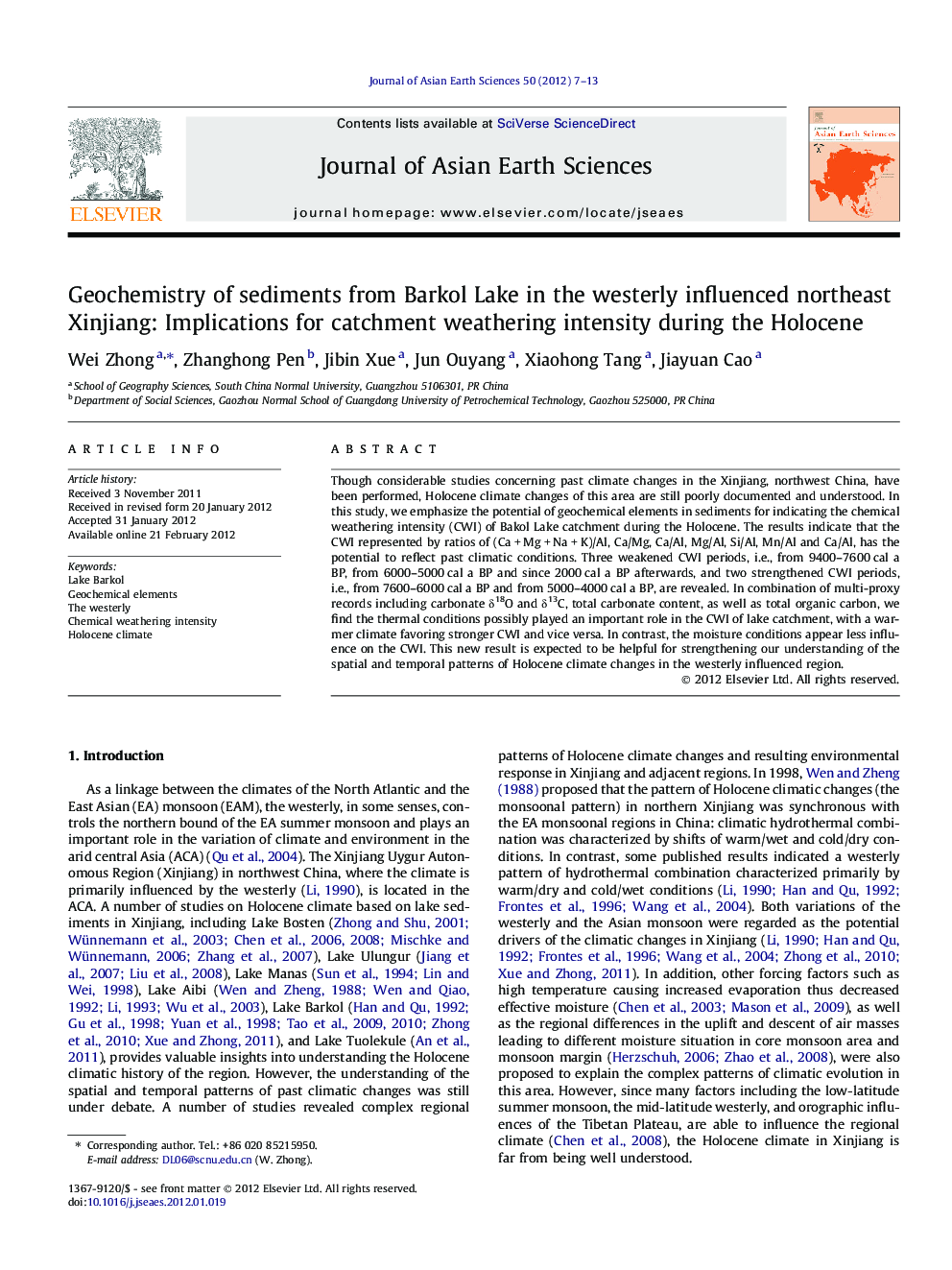| Article ID | Journal | Published Year | Pages | File Type |
|---|---|---|---|---|
| 4731435 | Journal of Asian Earth Sciences | 2012 | 7 Pages |
Though considerable studies concerning past climate changes in the Xinjiang, northwest China, have been performed, Holocene climate changes of this area are still poorly documented and understood. In this study, we emphasize the potential of geochemical elements in sediments for indicating the chemical weathering intensity (CWI) of Bakol Lake catchment during the Holocene. The results indicate that the CWI represented by ratios of (Ca + Mg + Na + K)/Al, Ca/Mg, Ca/Al, Mg/Al, Si/Al, Mn/Al and Ca/Al, has the potential to reflect past climatic conditions. Three weakened CWI periods, i.e., from 9400–7600 cal a BP, from 6000–5000 cal a BP and since 2000 cal a BP afterwards, and two strengthened CWI periods, i.e., from 7600–6000 cal a BP and from 5000–4000 cal a BP, are revealed. In combination of multi-proxy records including carbonate δ18O and δ13C, total carbonate content, as well as total organic carbon, we find the thermal conditions possibly played an important role in the CWI of lake catchment, with a warmer climate favoring stronger CWI and vice versa. In contrast, the moisture conditions appear less influence on the CWI. This new result is expected to be helpful for strengthening our understanding of the spatial and temporal patterns of Holocene climate changes in the westerly influenced region.
► Geochemical elements in the sediments have the potential to reflect catchment CWI. ► Three weakened and two enhanced CWI periods were revealed. ► Thermal conditions play a more important role in the CWI in the lake catchment.
